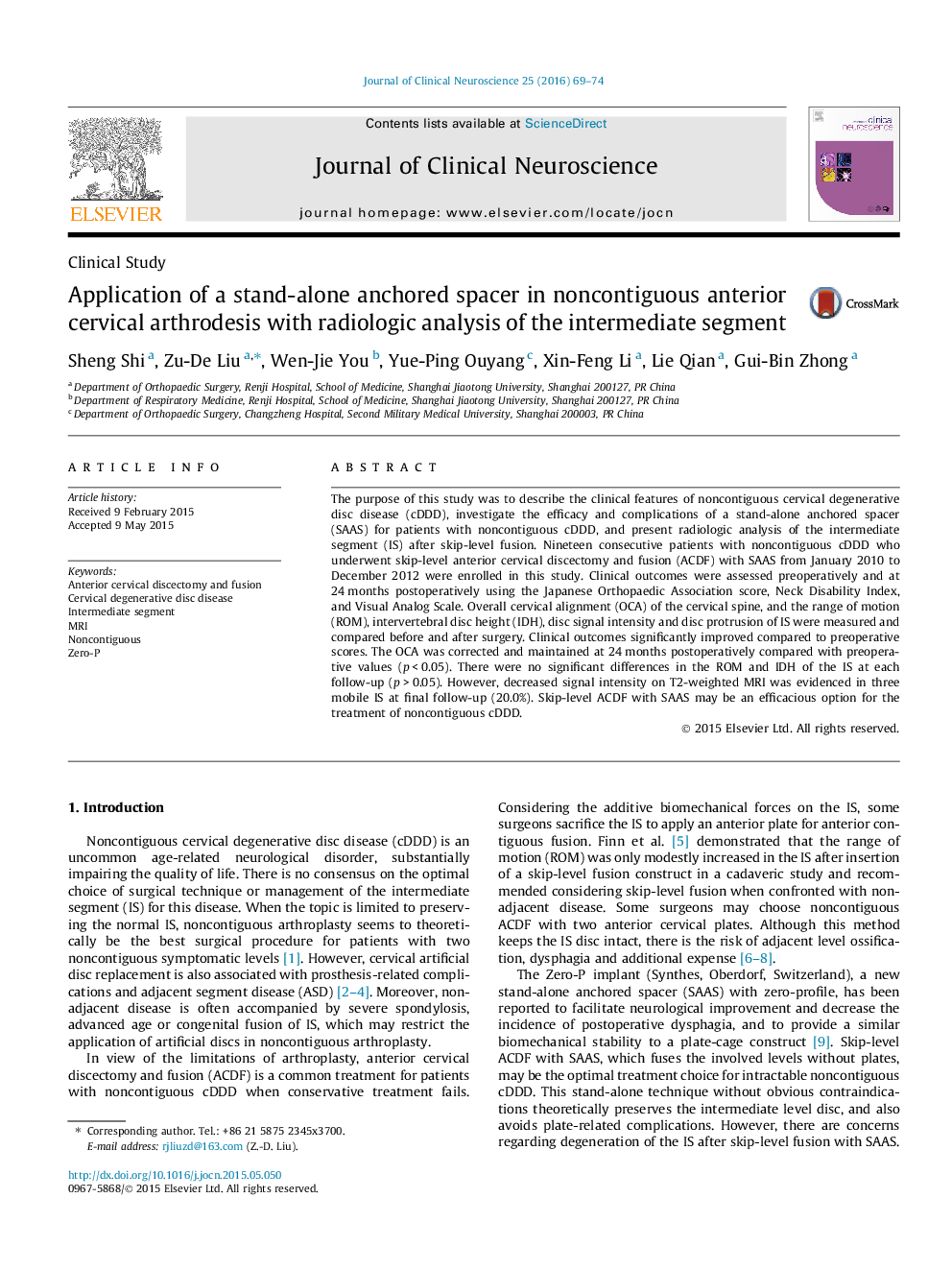| Article ID | Journal | Published Year | Pages | File Type |
|---|---|---|---|---|
| 3058543 | Journal of Clinical Neuroscience | 2016 | 6 Pages |
The purpose of this study was to describe the clinical features of noncontiguous cervical degenerative disc disease (cDDD), investigate the efficacy and complications of a stand-alone anchored spacer (SAAS) for patients with noncontiguous cDDD, and present radiologic analysis of the intermediate segment (IS) after skip-level fusion. Nineteen consecutive patients with noncontiguous cDDD who underwent skip-level anterior cervical discectomy and fusion (ACDF) with SAAS from January 2010 to December 2012 were enrolled in this study. Clinical outcomes were assessed preoperatively and at 24 months postoperatively using the Japanese Orthopaedic Association score, Neck Disability Index, and Visual Analog Scale. Overall cervical alignment (OCA) of the cervical spine, and the range of motion (ROM), intervertebral disc height (IDH), disc signal intensity and disc protrusion of IS were measured and compared before and after surgery. Clinical outcomes significantly improved compared to preoperative scores. The OCA was corrected and maintained at 24 months postoperatively compared with preoperative values (p < 0.05). There were no significant differences in the ROM and IDH of the IS at each follow-up (p > 0.05). However, decreased signal intensity on T2-weighted MRI was evidenced in three mobile IS at final follow-up (20.0%). Skip-level ACDF with SAAS may be an efficacious option for the treatment of noncontiguous cDDD.
